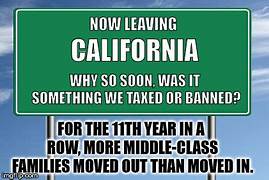Palo Alto , home to mansions, large housing lots and single families homes will shortly become the slums, like The Bronx in New York. Where a home existed—2-4 story apartment buildings with subsidized affordable housing, in the middle of the block. In a short while the value of the other homes will spiral down and folks will sell, cheap, just to save some of their equity. In time, 5-10 years, Palo Alto will look like East L.A. and have a crime rate Chicago has.
“In the community, the planned home zone has emerged as a hot topic, with supporters focusing on the flexibility it creates for housing projects and detractors highlighting the unpredictability that it generates for the neighborhoods where these projects would go up.
The council majority sided with the latter and voted 5-2, with Alison Cormack and Greg Tanaka dissenting, to narrow the parameters for planned home zones. Among the most significant changes that the council made on Monday was specifying that planned-home projects will only be allowed in areas that are already zoned for commercial and high-density residential use. The council then drove the point home further by explicitly stating that such projects will not be allowed in R-1 and R-2 zones, a determination that effectively dooms the Cato proposal.
Watch as lawsuits proclaiming Palo Alto is racist, because of its housing policy. Then the compromises and finally residents fleeing before they lose everything. Sadly with SB 9 and SB 10 possibly passing and becoming law—every city will be a New York. Chicago slum. California already has the highest poverty rate and number of people in poverty (12 million), expect that to double in ten years should slums be mandated for Palo Alto—Imagine Beverly Hills with affordable housing high rises north of Sunset Blvd—how quickly will the white liberals move to Dallas?
By curbing ‘planned home’ zone, Palo Alto steers housing plans away from single-family neighborhoods

City Council votes to focus contentious zoning tool on commercial areas
by Gennady Sheyner / Palo Alto Weekly, 4/13/21
A proposal from Cato Investments for a 24-apartment complex at 2239 Wellesley St. has attracted opposition in College Terrace. Courtesy Cato Investments
The Palo Alto City Council moved Monday to curtail its most promising — and unpredictable — zoning tool when it voted to keep “planned home” projects out of single-family neighborhoods.
In doing so, the council brought some relief to College Terrace residents who have opposed a recent plan from Cato Investments to construct a three-story building with 24 apartments at 2239 and 2241 Wellesley St. But its decision also disappointed housing advocates who argued at the hearing that prohibiting planned-home projects in single-family zones would hinder the city’s progress on housing.
For the council, which has consistently failed to meet its own goals for housing production, the planned-home zone — which allows residential builders to barter with the city over development standards — is the ultimate wild card. By providing builders flexibility on development standards such as height, density and parking requirements, it invites housing proposals that exceed code. The council has already held informal “pre-screening” sessions for three such proposals and it has three other proposals in the pipeline, awaiting reviews.
The success is, however, mixed at best. None of the three projects has so far advanced. While the council offered largely favorable feedback to a mixed-use development at 2951 El Camino Real, which includes 113 apartments, the other two planned-home proposals didn’t fare as well. One, a project from Sand Hill Property Company that included 187 apartments and a two-story office building at 3300 El Camino Real, has already been withdrawn. The other one, a 290-apartment complex pitched by Jeff Farrar for 3997 Fabian Way, remains on shaky ground after council members suggested in February that it’s too tall and dense for the commercial site.
In the community, the planned home zone has emerged as a hot topic, with supporters focusing on the flexibility it creates for housing projects and detractors highlighting the unpredictability that it generates for the neighborhoods where these projects would go up.
The council majority sided with the latter and voted 5-2, with Alison Cormack and Greg Tanaka dissenting, to narrow the parameters for planned home zones. Among the most significant changes that the council made on Monday was specifying that planned-home projects will only be allowed in areas that are already zoned for commercial and high-density residential use. The council then drove the point home further by explicitly stating that such projects will not be allowed in R-1 and R-2 zones, a determination that effectively dooms the Cato proposal.
Let by Vice Mayor Pat Burt, the council also staked out on Monday broader positions on citywide housing policies, including a desire to steer dense housing projects away from industrial zones and from land east of U.S. Highway 101, an area deemed vulnerable to sea-level rise. While it did not explicitly ban such projects, it directed its newly created Housing Element Working Group to review potential restrictions in these areas.
Burt and others in the council majority also agreed that to make housing construction more attractive, they have to make office construction less so. Burt suggested lowering the allowed density for office projects, thus making commercial projects less lucrative and creating incentives for developers to construct housing. He pointed to California Avenue, where the city has recently created a “housing incentive program” that gives residential developers density bonuses. Despite this action, there still hadn’t been any takers. Burt surmised that this is because commercial projects — which have the same density limits as housing projects in the new program — remain far more profitable than residential ones.
He suggested adjusting the underlying density limits for office zoning downward to make housing “adequately attractive.”
“I don’t see any circumstances that we’ll see residential in the California Avenue area under this (current) formula,” Burt said.
Several council members, including Burt and Mayor Tom DuBois, pointed out that the city already allows more than one housing unit per lot in R-1 zones, a function of recent state and local efforts to loosen laws surrounding accessory dwelling units. Dubois also alluded to the recent division in College Terrace over the Cato project, with supporters putting up multiple posters of former President Donald Trump — and one of the McCloskey couple, guns blazing — on poles in the neighborhood.
“I don’t think these tactics are really helpful and I think what we’re trying to do tonight is focus on some problem solving,” DuBois said.
A proposal to build 24 apartments at 2239 and 2241 Wellesley St. in Palo Alto, where two homes currently stand, can’t move forward after the City Council approved changes to rules around planned home zones. Photo by Magali Gauthier.
DuBois criticized the planned-home zone for being too “wide open.” Under the rules that the council approved in February 2020, it applies only to residential and mixed-use projects that devote at least 20% of their units to affordable housing and that generate at least as many residences as jobs. Up until Monday, however, the rules did not prohibit planned-home projects in single-family zones.
Those who opposed the city’s moves to narrow the parameters of the new zone suggested that doing so will deprive the city of promising housing opportunities at a time when the city is struggling to increase its housing stock. Between 2016 and 2019, the city hadn’t approved a single new housing unit for the “very low” income category. In the current housing cycle, which stretches from 2015 to 2023, it has approved 101 such units, which is 15% of its RHNA allocation of 691. In the “low” income category, the city has approved 65 units — 15% of its allocation of 432. And it has only approved 28 units in the “moderate” category, just 10% of its allocation.
Cynthia Gildea, a representative from Cato Investments, pointed to the city’s recent failures and suggested that limiting R-1 zones exclusively to single-family homes “doubles down” on the exclusionary history surrounding the zoning designation. Why, she asked, is the Wellesley project so scary that it justifies banning multifamily and “missing middle” housing from being built in neighborhoods throughout Palo Alto? The move, she argued in a letter, “amounts to changing the rules in the middle of the game.”
“While the City Council continues to pay lip service to the housing crisis, this action sends the message to housing developers that Palo Alto is not a place to build,” Gildea wrote.
The nonprofit group Palo Alto Forward similarly criticized the prohibition on using the planned home zone on R-1 lots, calling it “wrongheaded and inappropriate.”
“The PHZ never mentioned exemptions for single family lots and by changing this policy midstream to meet the requests of one neighborhood, the City Council will demonstrate a bad faith effort that blocks new, affordable housing,” Palo Alto Forward President Gail Price wrote in a letter to the council. “Further, by limiting the ability to use this important tool across the city, Palo Alto will make it impossible to equitably zone for new housing in every neighborhood.”
But the council majority agreed that “planned home” zoning was never intended for single-family neighborhoods. Rather, it was introduced last year to supplement the housing incentive program and to remove barriers for residential developers who need a few additional feet of height or a slight reduction in parking requirements to make the projects pencil out.
Council member Eric Filseth said he was surprised to see the planned-home zoning get conflated with questions about R-1 neighborhoods. The idea of making major changes to R-1 zones, which make up 70% of the city, did not cross his mind last year, when the council voted to allow the use of the new zoning tool, Filseth said.
Numerous residents argued Monday that while planned-home projects may be appropriate in some parts of the city, they should not be considered in R-1 neighborhoods. College Terrace resident Anna Lembke was among them.
“This is not about NIMBY. This is about making sure that we still have backyards in College Terrace 20 years from now,” said Lembke, who lives near the site of Cato’s proposed development. “This is also not about structural racism. This is really about preserving the integrity of walkable neighborhoods.”
The council’s decision to narrow the parameters of the planned-home zone is expected to curtail the number of applications that the city receives under this designation. Even projects that the council has supported, including 2951 El Camino Real, would be banned under the new rules (while that project is largely on commercial land, a small part of it intrudes on two R-1 zones on Olive Avenue). The only reason that project is still viable is because the council agreed to exempt the projects that have already gone through a pre-screening.
Cormack and Tanaka both dissented and suggested that the city should not be taking away its own discretion to review housing projects.
“Each of these sites is unique,” Cormack said. “Every time we limit ourselves a degree of freedom, we may be foreclosing an option we may not even be aware of.”
Cormack, Tanaka and Filseth also voted against Burt’s proposal to explore a host of other long-term policies pertaining to housing, including adjustments to floor-area-ratio limits for commercial projects. While his colleagues pointed to the city’s famously high jobs-to-housing ratio as a reason to support a shift away from commercial development and toward residential, Tanaka argued that jobs are inherently good.
“I don’t think we’ve had a thorough discussion on that and I think it’s premature to make jobs the bogeyman right now, especially when people are looking for jobs,” Tanaka said.



